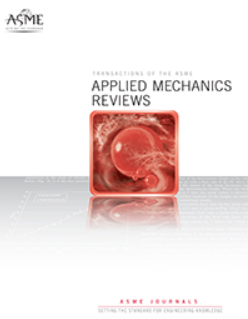Effect of Control Parameters on Hybrid Electric Propulsion UAV Performance for Various Flight Conditions: Parametric Study
IF 16.1
1区 工程技术
Q1 MECHANICS
引用次数: 1
Abstract
Nowadays, great efforts of ongoing research are devoted to hybrid-electric propulsion technology that offers various benefits, such as reduced noise and pollution emissions and enhanced aircraft performance and fuel efficiency. The ability to estimate the performance of an aircraft in any flight situation in which it may operate is essential for aircraft development. In the current study, a simulation model was developed that allows estimating the flight performance and analyzing the mission of a fixed-wing multi-rotor Unmanned Aerial Vehicle (UAV) with a hybrid electric propulsion system (HEPS), with both conventional and Vertical Takeoff and Landing (VTOL) capabilities. The control is based on the continuous specification of pitch angle, propulsion thrust, and lift thrust to achieve the required conditions of a given flight segment. Six different missions were considered to analyze the effect of control parameters exhibiting the most influence on the UAV mission performance. An appropriate set of control parameters was selected through a multidimensional parametric study. The results show that the control parameters, if not well tuned, affect the mission performance: for example, in the deceleration transition, a longer time to reduce the cruise speed to stand still may be the result because the controller struggles to adjust the pitch angle. In addition, the implemented methodology captures the effects of transient maneuvers, unlike typical quasi-static analysis without the complexity of full simulation models.控制参数对混合动力推进无人机不同飞行条件下性能影响的参数化研究
如今,人们正在努力研究混合动力推进技术,它提供了各种好处,如降低噪音和污染排放,提高飞机性能和燃油效率。在飞机可能运行的任何飞行情况下评估飞机性能的能力对飞机开发至关重要。在目前的研究中,开发了一个仿真模型,可以估计具有混合动力推进系统(HEPS)的固定翼多旋翼无人机(UAV)的飞行性能和分析任务,具有传统和垂直起降(VTOL)能力。该控制是基于连续规范的俯仰角、推进推力和升力推力,以达到给定飞行段的所需条件。考虑了6种不同的任务,分析了对无人机任务性能影响最大的控制参数的影响。通过多维参数研究选择了一组合适的控制参数。结果表明,控制参数如果调整不好,会影响任务性能:例如,在减速过渡阶段,由于控制器难以调整俯仰角,可能导致降低巡航速度到静止的时间较长。此外,所实现的方法捕获了瞬态机动的影响,不像典型的准静态分析,没有完整仿真模型的复杂性。
本文章由计算机程序翻译,如有差异,请以英文原文为准。
求助全文
约1分钟内获得全文
求助全文
来源期刊
CiteScore
28.20
自引率
0.70%
发文量
13
审稿时长
>12 weeks
期刊介绍:
Applied Mechanics Reviews (AMR) is an international review journal that serves as a premier venue for dissemination of material across all subdisciplines of applied mechanics and engineering science, including fluid and solid mechanics, heat transfer, dynamics and vibration, and applications.AMR provides an archival repository for state-of-the-art and retrospective survey articles and reviews of research areas and curricular developments. The journal invites commentary on research and education policy in different countries. The journal also invites original tutorial and educational material in applied mechanics targeting non-specialist audiences, including undergraduate and K-12 students.

 求助内容:
求助内容: 应助结果提醒方式:
应助结果提醒方式:


